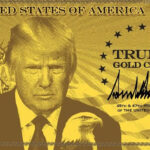
James Bennet – When the New York Times lost its way

In June 2020, amidst a tumultuous climate in America, marked by the COVID-19 pandemic and nationwide protests following George Floyd’s death, the New York Times found itself at the heart of a contentious debate. James Bennet, then the editorial-page editor, approved an op-ed by Senator Tom Cotton, which ignited a storm within the newspaper’s ranks and highlighted a deepening ideological divide.
Bennet’s piece, “When the New York Times lost its way, America’s media should do more to equip readers to think for themselves,” reflects on this incident, drawing a vivid picture of the internal conflicts and philosophical struggles within the Times. It raises critical questions about the role of journalism, the balance of opinion and news, and the handling of controversial viewpoints.
Bennet recalls how The New York Times, once a paragon of journalistic neutrality, began to display a discernible tilt toward liberal ideologies, significantly during his tenure from 2016 to 2020. This shift was not subtle; it was a transformation that saw the paper increasingly align with progressive viewpoints, frequently at the expense of conservative perspectives.
Dean Baquet, the executive editor, and Bennet initially supported the publication of Cotton’s op-ed. However, this stance soon faced severe backlash, primarily from the Times staff. The crux of the controversy centered around Cotton’s call for military intervention to quell the protests, a viewpoint that many staff members felt was a direct threat to their safety and antithetical to the values of the newspaper.
The internal turmoil that ensued was unprecedented. Staff members took to Twitter and internal communication channels to express their dissent, ultimately leading to Sulzberger, the publisher, demanding Bennet’s resignation. This moment marked a significant shift in the Times’ operational ethos, revealing a move from what Bennet describes as “liberal bias” to “illiberal bias.” This shift, according to Bennet, signifies a reluctance to engage with ideas that contradict the predominant ideological leanings within the organization.
He further illustrates this bias by recalling Sulzberger’s response to a conservative columnist’s complaint about the stringent editorial scrutiny their pieces received compared to liberal counterparts. Sulzberger’s blunt acknowledgement of a double standard and advice to “get used to it” starkly contrasts the paper’s publicly professed commitment to impartiality.
Bennet recounted how he was urged by senior newsroom editors to attach “trigger warnings” to op-ed pieces authored by conservatives.. Such a practice, as Bennet suggested, not only stigmatized conservative voices but also signaled an implicit acknowledgment of the paper’s own bias. This directive to preface conservative opinions with warnings, in essence, served as a clear marker of the increasingly hostile environment for conservative perspectives within the esteemed publication.
The New York Times, a historically venerated institution in American journalism, has fallen hard. The Bennet episode brings to light how they have failed in navigating the complex interplay of journalistic integrity, editorial independence, and the pressures of an increasingly polarized and digital-first media environment. As the 2024 presidential election looms, these issues gain even more significance, raising questions about the Time’s biases in reporting election progress and results.
James Bennet’s candid recounting of his experiences at the New York Times opens a window into the inner workings of one of the world’s most influential newspapers. No one wants to see “how the sausage is made” but when the “sausage” is making people sick, it is time to take a look. The New York Times is a biased newspaper, in need of close examination.


























Mr. Oliver. Best article so far, spot on. NYT has a left leaning bias, and I am not talking left-of-center. It is not far left but only one quadrant to the right of that.
Factually though —— it is superior to most rags.
Thanks, I liked it.
Did have a lot of words though so you’re not getting a Horist read. He can’t handle the truth —– or a lot of words —- confuses him.
Good article as well Daniel, but in this day and age, I feel No paper or news media has lost their way.
They have all turned to Whores, they promote ideas not because it is news worthy or even correct.
All media wants to do is report on what makes them popular, they want specific groups seeing or reading the news to feel better and agree
no matter what the real story is!
The New York Times is NO different.
I would bet 3/4 of the people at the times do not agree with how the story’s come to be, but I do not blame them
as their jobs could be on the line.
The ones to blame are the Editors and Management.
The ones delivering the news try to go with what is popular.
The ones creating the story are not told to stop crapping in the media!
I have said it before ( The fish rots at the head first )
Just report the new, ACCURATELY WITH THE ACTUAL FACTS.
A bit hysterical, Darren. I wonder whose facts you prefer?
Makes a great bird cage liner.
Not as good as a cat litterpan liner.
But you are n the right track.
What tripe — that the NY Times experienced some kind of attitude change in recent years. The Times has tilted far left for centuries.
It demeaned and disparaged blacks in the 1800s and was none too happy about the Union victory, but it was gratified to be able to function in Jim Crow conditions.
It clamored for war against small countries for centuries like the Spanish American War.
It portrayed the Third Reich as a meritorious, gentle and kind regime which only sought peace and tranquility despite knowing the humanitarian crisis unfolding in Europe, which The Times was able to publicly disregard.
Really — has there ever been a patriotic undertaking that The Times didn’t take pains to demean?
There’s a formula that sums up The Times’ stance on news:
New York Times = contempt for blacks = Marxist = Fascist = deeply anti-American = Jew envy = all the news that’s fit to tint.
The Times subsequently portrayed the USSR the same way. The intent of the Times’ news staff to soft-pedal genocide in Stalin’s Russia is well-known. That Times whitewash of Stalin, by the way, won the company a Pulitzer Prize — one the paper has refused to return, so that dimtwits continue admiring the Times in its campaign to undermine Americana.
The Times famously was so angry at the Vietnam War that it published something called The Pentagon Papers to successfully destroy support for the war. It was a natural follow-up for The Times to report that our enemies, the Viet Cong, won the pivotal Tet Offensive, which actually was a military success by all non-political accounts, but it was a public relations disaster.
Now the Jew-haters are crawling out of the Times woodwork. What else is new? The further left an entity is, the more it naturally hates Jews.
Look at the goober Frankincest. He can’t come up with a single disagreement between himself and the KKKlan or with Hamas. He He sports Swastika tattoos on all four cheeks or maybe even more than four. He can’t name a single KKKlansta whom he would take issue with. The perfect Times slurper.
Dougie, Until you respond to the request to prove ANY of the insinuations you have made in the other thread about Tom, about Me, I will not respond to this trash. You were asked, politely, without name calling to simply support a number of your asinine, unfounded, unproven, POS statements. As I said when I penned it:
WE WILL HEAR CRICKETS.
Crickets and deflection I should add.